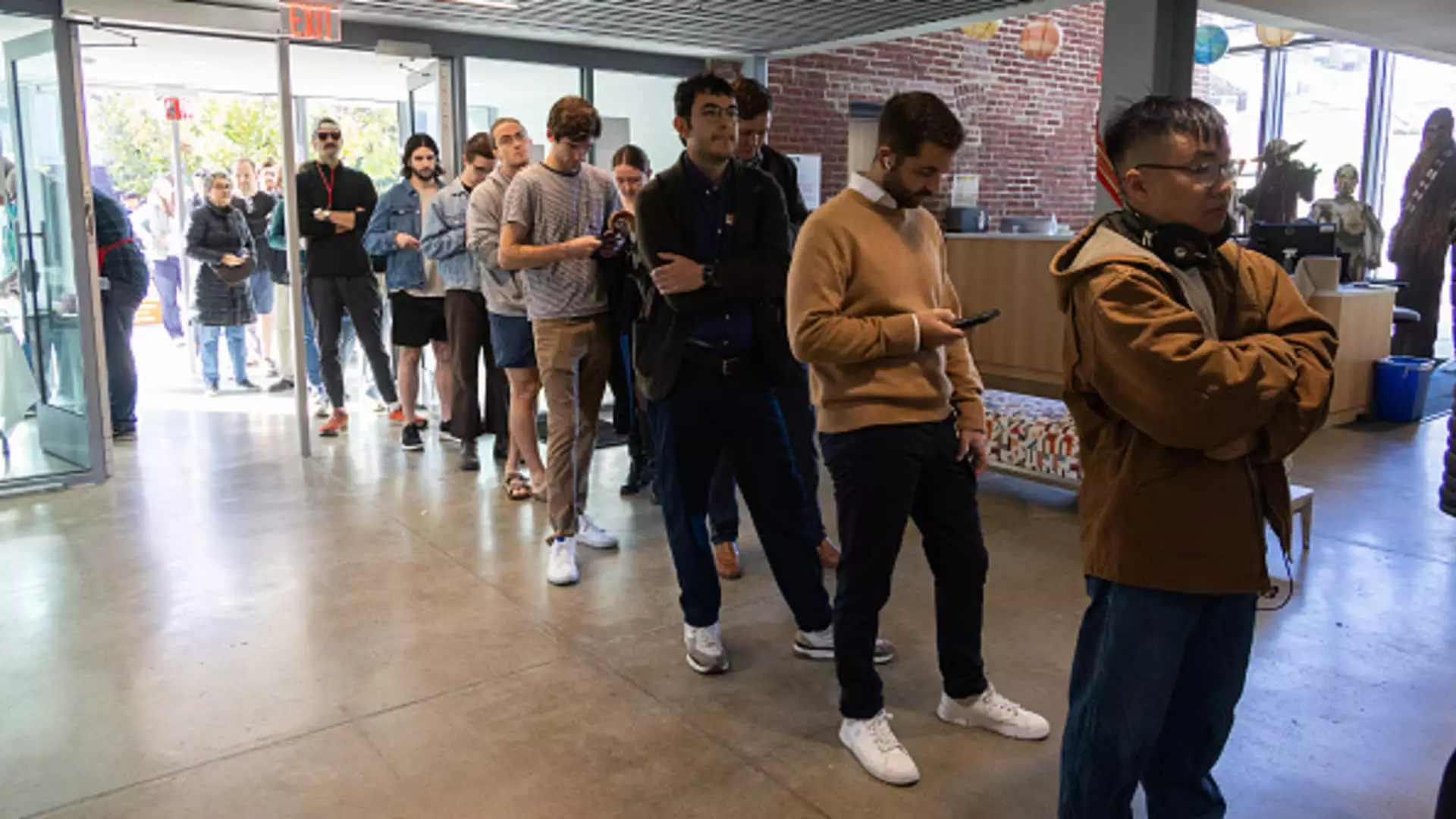As Americans approached election day, a striking divide emerged, particularly evident through the lens of gender. The disparity in voting patterns between men and women underscored a significant theme in the electoral landscape, with women largely supporting Vice President Kamala Harris and men gravitating towards President-elect Donald Trump. According to exit polls conducted by reputable sources like NBC News, Harris garnered 53% of the female vote, while Trump received 55% of the male support. The result was a notable 21-point gender gap that not only highlighted voting behavior but also exposed deeper societal and economic issues.
The driving factors behind this gender divide reveal much about the underlying economic anxieties voters faced. Many voters identified inflation and economic stability as primary concerns, which, according to various analyses, heavily influenced their voting preferences. Trump’s support among men, particularly those from marginalized communities such as Hispanic and Black voters, can be attributed to a sense of financial pessimism. Economists like Julia Pollak from ZipRecruiter suggest that young men in particular feel a disconnection from traditional pathways to economic advancement, which may have driven them to lean towards Trump’s promises of economic revitalization.
Pollak points to data indicating a troubling trend: men aged 25 to 54, often deemed in their prime working years, are increasingly withdrawing from the workforce. This phenomenon is especially pronounced among non-college-educated men, whose participation in the job market is declining. This situation reveals a profound disillusionment, emphasizing a growing sentiment that traditional routes to economic success are waning.
The educational landscape further complicates this divide. Statistical analyses from the Pew Research Center highlight that, while young men and women were equally likely to earn a bachelor’s degree in the past, the gap has widened significantly today, with 47% of young women and only 37% of young men achieving higher education. This educational disparity not only impacts individual job prospects but also shapes the broader economic landscape as fewer men enter fields that require advanced qualifications.
Experts argue that less access to vocational training and the decline of traditional blue-collar jobs—exacerbated by globalization and automation—have resulted in a labor force that struggles to adapt. Economists warn that young men are increasingly susceptible to becoming NEETs (Not in Employment, Education, or Training), a demographic particularly vulnerable in today’s economy. Richard Fry, a senior researcher at Pew, notes that a lack of rewards for working leads to diminished motivation, pushing more young men away from the labor force altogether.
The Broader Implications of Economic Policy
The sentiments of men regarding the electoral process were overwhelmingly tied to their perceptions of financial stability. Surveys indicated that men—especially those with lower educational attainment—believed that the election outcomes would significantly affect their financial circumstances. NEFE’s research revealed that many were considering their future financial well-being as a deciding factor in their voting decisions. This collective anxiety illustrates the importance of economic discussions in political campaigns and how they resonate differently across genders.
Conversely, women have made substantial progress in educational attainment and career advancement. Many are now prioritizing professional growth over traditional roles in family life. This shift results in a different set of expectations from elected officials, particularly concerning policies like universal childcare and reproductive rights. As Ali Bustamante from the Roosevelt Institute points out, women today view their roles through a career-oriented lens, reshaping societal norms around marriage and motherhood.
Despite the amplified discourse surrounding reproductive rights in the election, it did not translate into heightened female voter turnout. Exit polls indicated that, while women prioritize these issues, they are often balanced against economic concerns, which ultimately influence their voting behaviors. Fatima Goss Graves from the National Women’s Law Center Action Fund posits that while Trump’s appeal resonated with young men based on economic pain points, women continue to advocate for broader social issues.
The 2024 election highlighted various societal dilemmas, with the importance of reproductive rights juxtaposed against other pressing issues such as paid family leave, affordable housing, and wage equality. Graves emphasizes that this election does not signify a retreat for women’s rights; rather, it highlights ongoing struggles and the necessity for continued advocacy.
As America moves beyond the electoral cycle, the complexities of the gender divide and economic concerns remain pivotal in shaping the future political landscape. Understanding these dynamics will require careful attention to how policy decisions reflect the needs of both men and women while fostering an environment conducive to economic growth and equality. The enduring challenge lies in how societal narratives are constructed around these vastly different experiences, ultimately shaping the discourse around American identity and opportunity.

Leave a Reply